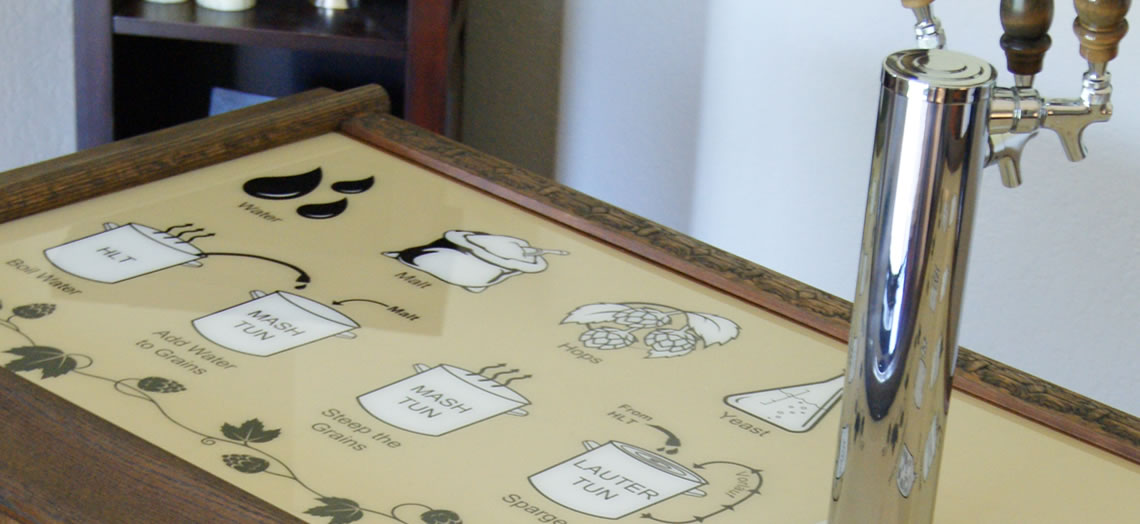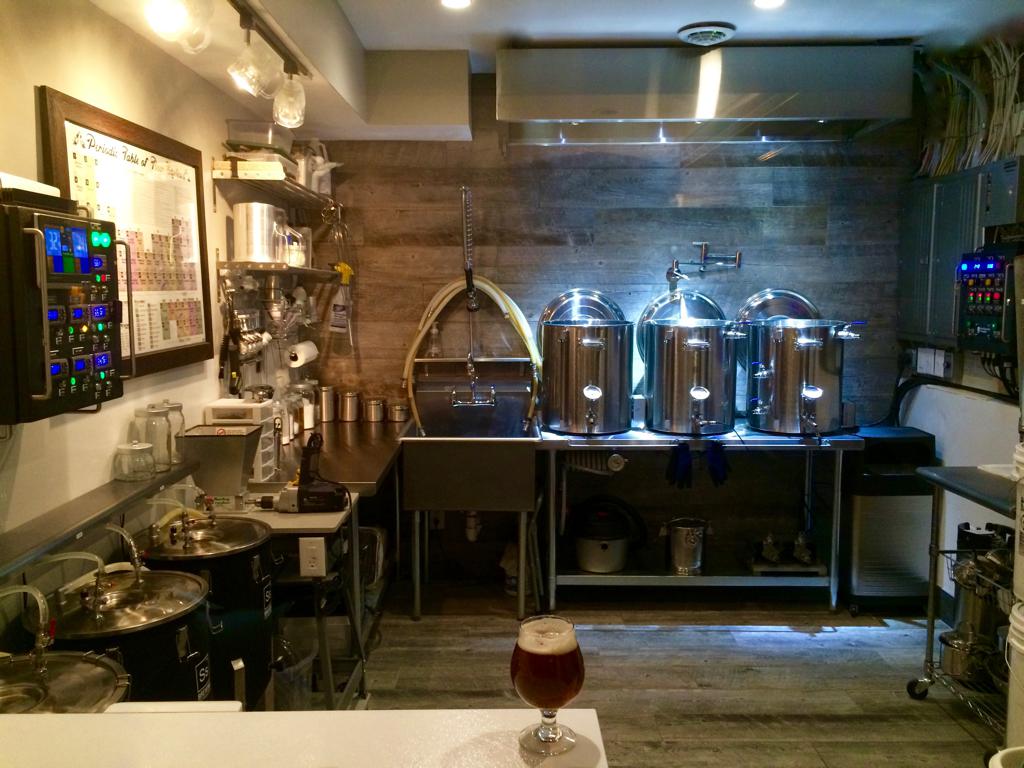Home brew bars have become a popular trend among beer enthusiasts, offering a unique way to enjoy freshly brewed beverages right at home. Whether you're a seasoned brewer or a complete beginner, setting up a home brew bar can be an exciting and rewarding experience. This article will guide you through everything you need to know to create your own personalized home brew bar.
As more people embrace the craft beer movement, the demand for home brewing has skyrocketed. Having a dedicated space for brewing allows you to experiment with flavors, styles, and techniques that suit your taste preferences. This trend not only enhances your brewing skills but also brings a social aspect to your home.
In this guide, we'll explore the essentials of setting up a home brew bar, from choosing the right equipment to creating a functional and stylish space. By the end of this article, you'll have all the knowledge and inspiration you need to transform your home into a brewing haven. Let's dive in!
Read also:Who Is Yangyang Actor Biography Career And Achievements
Table of Contents
- Introduction to Home Brew Bars
- Essential Equipment for Home Brewing
- Designing the Perfect Home Brew Bar Space
- Exploring Popular Beer Styles for Home Brewing
- Step-by-Step Brewing Process
- Maintaining Your Home Brew Bar
- Tips for Beginners
- Joining the Home Brew Community
- Cost Considerations for Setting Up a Home Brew Bar
- The Future of Home Brew Bars
Introduction to Home Brew Bars
Why Home Brew Bars Are Gaining Popularity
Home brew bars have seen a surge in popularity over the past few years, driven by the growing interest in craft beer and the DIY movement. People are increasingly looking for ways to personalize their drinking experience, and brewing at home offers a level of control and creativity that commercial beers cannot match.
According to a report by the Brewers Association, the number of home brewers in the United States alone has surpassed 1.2 million. This trend is not limited to one region; it's a global phenomenon that continues to expand as more people discover the joys of brewing.
Essential Equipment for Home Brewing
Key Tools for Your Home Brew Bar
Setting up a home brew bar requires some essential equipment to ensure you can brew efficiently and effectively. Below is a list of tools you'll need:
- Brew kettle: A large pot for boiling your ingredients.
- Fermenter: A container where fermentation takes place, typically made of glass or plastic.
- Hydrometer: A device used to measure the sugar content in your brew, which helps determine alcohol levels.
- Carboy: A large bottle used for secondary fermentation.
- Airlock: A device that allows carbon dioxide to escape while preventing air from entering.
Investing in quality equipment is crucial for achieving consistent results. While you can start with basic tools, upgrading to more advanced equipment can enhance your brewing experience.
Designing the Perfect Home Brew Bar Space
Creating a Functional and Stylish Space
Designing a home brew bar involves both functionality and aesthetics. You'll want to create a space that is not only practical for brewing but also inviting for guests. Consider the following tips:
- Choose a well-ventilated area to prevent odors from spreading throughout your home.
- Ensure there is enough counter space for your equipment and ingredients.
- Incorporate storage solutions, such as shelves or cabinets, to keep your tools organized.
- Add personal touches, like artwork or signage, to make the space reflect your style.
A well-designed home brew bar can become a focal point in your home, encouraging social gatherings and shared experiences.
Read also:Blood And Water Season 5 The Next Chapter Youve Been Waiting For
Exploring Popular Beer Styles for Home Brewing
Discovering Your Favorite Brews
One of the most exciting aspects of home brewing is the ability to experiment with different beer styles. From classic ales to innovative IPAs, there's a wide range of options to choose from. Here are some popular styles to consider:
- IPA (India Pale Ale): Known for its bold hop flavors and aromas.
- Stout: A dark beer with rich, roasted flavors.
- Wheat Beer: Light and refreshing, perfect for warm weather.
- Sour Beer: Tart and tangy, offering a unique taste experience.
Experimenting with various styles allows you to discover new flavors and develop your own signature brews.
Step-by-Step Brewing Process
From Grain to Glass
The brewing process involves several stages, each crucial to the final product. Here's a step-by-step guide:
- Mashing: Combine grains with hot water to extract sugars.
- Boiling: Heat the liquid (wort) and add hops for flavor and bitterness.
- Fermentation: Cool the wort and add yeast to begin fermentation.
- Allow the beer to mature and develop its flavors.
- Bottling: Transfer the beer to bottles or kegs for carbonation.
Following these steps carefully will help you produce high-quality beer that rivals professional brews.
Maintaining Your Home Brew Bar
Ensuring Long-Term Success
Proper maintenance is key to keeping your home brew bar in top condition. Regularly clean and sanitize your equipment to prevent contamination and ensure consistent results. Additionally, store your ingredients in a cool, dry place to maintain their quality.
It's also important to document your brewing process, noting any changes or adjustments you make. This will help you refine your techniques and improve future batches.
Tips for Beginners
Getting Started on the Right Foot
If you're new to home brewing, here are some tips to help you get started:
- Start with simple recipes to build your confidence and skills.
- Join online forums or local clubs to connect with other brewers and learn from their experiences.
- Don't be afraid to make mistakes; they're part of the learning process.
- Invest in quality ingredients to enhance the flavor of your beer.
With practice and patience, you'll soon be producing delicious beers that impress even the most discerning palates.
Joining the Home Brew Community
Connecting with Fellow Brewers
The home brew community is a vibrant and supportive network of individuals passionate about crafting their own beers. By joining this community, you can share your experiences, gain valuable insights, and participate in events and competitions.
Consider attending local brew fests or joining online groups to connect with other brewers. These interactions can inspire you and provide new ideas for your own creations.
Cost Considerations for Setting Up a Home Brew Bar
Budgeting for Your Brewing Adventure
Setting up a home brew bar can vary in cost depending on the equipment and ingredients you choose. While basic setups can start at around $100, more advanced systems may cost several hundred dollars. Factor in the cost of ingredients, which will vary based on the type and quantity of beer you plan to brew.
Remember, investing in quality equipment and ingredients can save you money in the long run by reducing the likelihood of errors and improving the overall quality of your beer.
The Future of Home Brew Bars
Trends and Innovations in Home Brewing
As technology advances, so does the world of home brewing. Innovations such as smart brewing systems and automated fermentation controllers are making it easier than ever to produce high-quality beer at home. These advancements allow brewers to monitor and adjust their processes remotely, ensuring precise control over every batch.
The future of home brew bars looks bright, with more people embracing the craft and pushing the boundaries of what's possible. Whether you're a hobbyist or a serious brewer, there's never been a better time to join the home brewing revolution.
Conclusion
Setting up a home brew bar is a rewarding endeavor that combines creativity, science, and passion. By following the guidelines outlined in this article, you can create a space that not only meets your brewing needs but also enhances your home environment. Remember to experiment, learn from your experiences, and enjoy the process.
We invite you to share your thoughts and experiences in the comments below. Whether you're a seasoned brewer or just starting out, your insights can help others on their brewing journey. Don't forget to explore our other articles for more tips and inspiration. Cheers to your brewing success!

